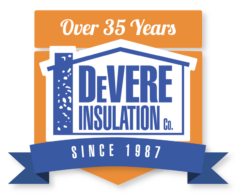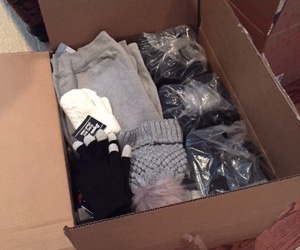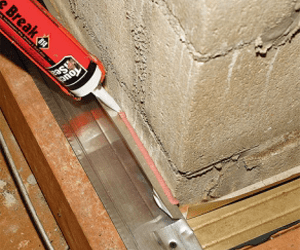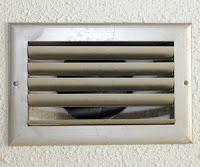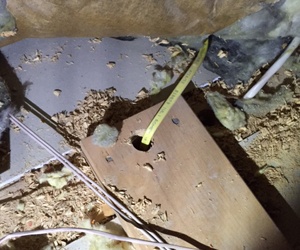 |
| Example of poorly installed insulation. |
Poor insulation occurs so often that residents in newly constructed homes, or those who occupy commercial spaces, pay higher than necessary energy bills. Lower bills mean happier customers – why not take the extra steps to ensure your customers are happy?
Here are four easy steps to keep your customers happy and ensure insulation is properly installed the first time:
Damaged Insulation Replacement
Damaged insulation can be a result of something serious like fire or water damage, or something that was never even realized like weather or critter damage. Disrupted insulation is often caused by other subcontractors who may go into the attic to make upgrades or repairs. They move the insulation out of the way (i.e. blown-in fiberglass) and fail to put it back in place, or trample fiberglass which considerably reduces its R-value. Be diligent. If work is done or changes are made to insulated spaces, call your insulation team back to be sure the product is in proper condition.
Proper Installation Techniques
Properly installed insulation is critical to ensure your customer gets the most from their investment. An insulation professional knows how to correctly install insulating products. One product most often improperly installed is fiberglass batts. Many people believe they are qualified to install them, but many batts are misaligned leaving gaps which reduces their effectiveness. Specific problems we see are batts that are torn, patted down, improperly cut to fit around openings/pipes, separated from the surface they are supposed to insulate (attic floor, for instance) or missing altogether. Hire a qualified insulation contractor to be sure your customer is getting the most out of their investment.
Sufficient Insulation Levels
Most commonly seen in renovations or rehabs, many older homes don’t have insulation levels that meet today’s code. Recommended insulation levels for our region are as follows:
Ceilings: R-49
Walls: R-21
Floors: R-30
Basement Walls: R-13
When considering these standards we always recommend paying special attention to not just meeting codes, but also optimizing energy efficiency. Air sealing the building envelope can have a very short payback time through lower energy bills.
Missed Opportunities for Insulation
Similar to insufficient insulation, we run into cases where areas that should have been insulated were neglected or overlooked. Common trouble spots include knee walls, dropped soffits, chimney chases and sealing around attic access doors. Each exposed area is an opportunity for conditioned air to escape. When planning insulation for a new home or other space, be sure to take these areas into consideration.
Have questions about a current or upcoming project? We have the answers. Contact us today.
